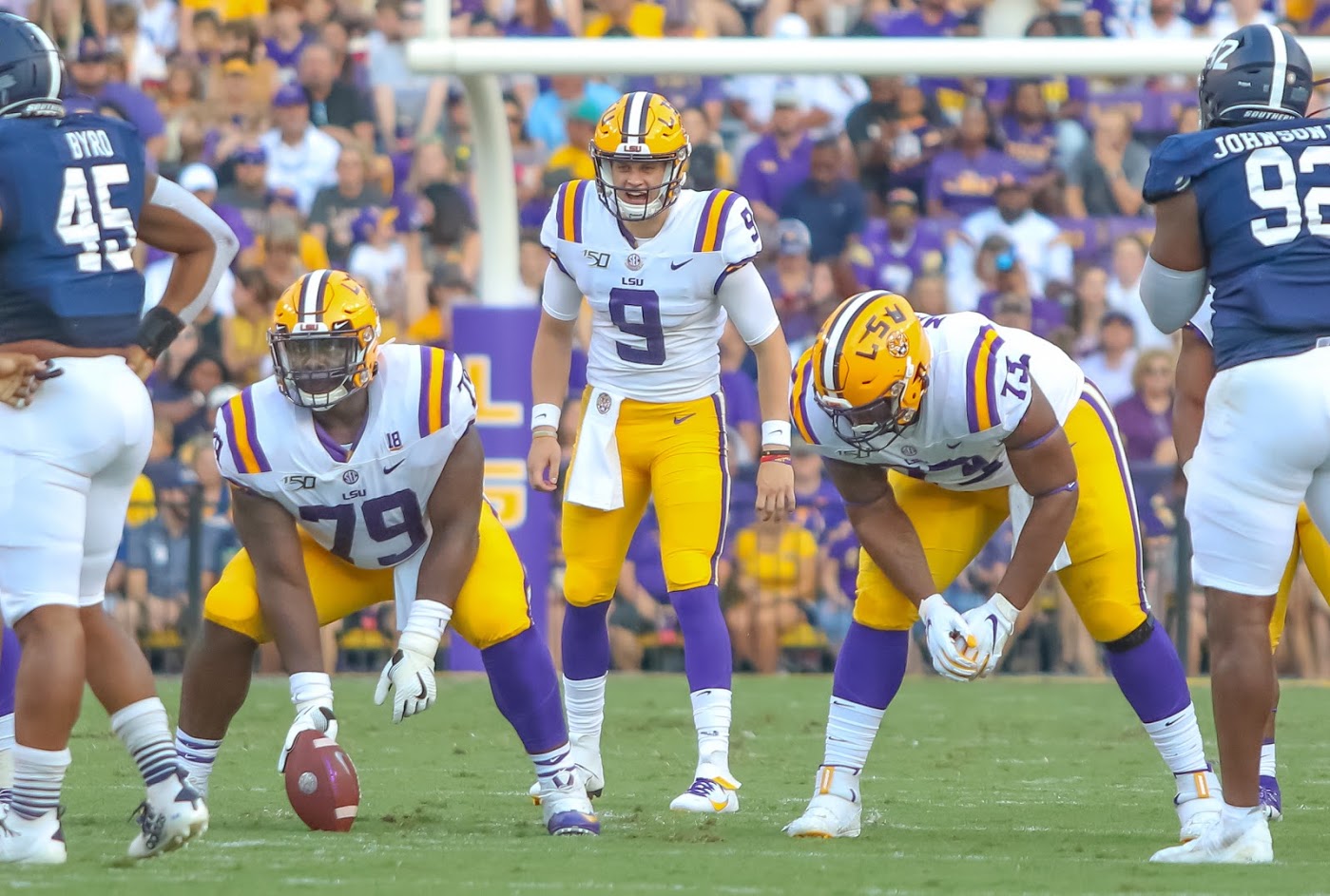
Devin White misses Derrius Guice.
They were friends and teammates, sure, but more importantly they were kindred spirits on opposite sides of the ball. Both stars were smash-mouth, five-star generals of trash talking any time LSU pitted its offense and defense against each other on the practice field.
White, the All-American linebacker, is still in the middle of LSU’s defense ready to let his counterparts know every time he makes a play this spring. What he hasn’t found yet is a runner back worthy of becoming his verbal sparring partner.
“They don’t really got no running backs to talk to now that Derrius is gone, cause Derrius was the one who talked all the trash,” White said.
Ed Orgeron and the rest of the LSU staff of course miss Guice for a whole different set of reasons. LSU is in the midst of its first spring in years without a bell cow tailback like Guice, Leonard Fournette or even Darrel Williams.
LSU’s returning running backs amassed a cumulative total of 134 yards on 57 carries last season, which averages out to an anemic 2.35 yards per carry. It’s also the first time since 1974 that LSU doesn’t return a running back with a rushing touchdown, according to athletic department research.
The group is currently lead by senior Nick Brossette with sophomore Clyde Edwards-Helaire, junior Lanard Fournette, mid-year enrollee Tae Trovens and converted fullback David Ducre all rotating in.
According to Orgeron, LSU isn’t planning on forcing one of those backs into an every-down role for the sake of having a featured back.
“It’s going to force us to throw the football,” Orgeron said on the first day of spring practices. “It’s going to force us to be more creative on offense. Until we find a feature back, the offense will not be featured by a running back. We’re going to throw the football, and I think we’re going to do that a lot better.”
That comment laid out a not-so-subtle challenge to the running backs group that now is the time for someone to step up. Running back is arguably the most wide-open position battle on an offense that’s also looking for a new starters under center, along the offensive line and at the receiver position.
“We all know in our room, there were guys prior to us and all we can do is try to hold that torch up,” Edwards-Helaire said. “As running backs we have to hold that torch up and give praise to those guys who came before us — Jeremy (Hill), Leonard, Derrius. Being able to fill those shoes is something that stands up in that room, and we’re going to make it happen.”
“To be honest, I don’t really listen to that. I haven’t been reading anything on the internet,” Brossette told reporters. “I don’t care what they say.”
LSU may never find that traditional lead back, but it does have a room full of running backs who feel their skillsets could thrive in the more wide-open attack being implemented by offensive coordinator Steve Ensminger.
“Right now, the run plays that we have are designed for a fast-moving offense,” Clyde-Edwards Helaire said. “They’re designed to spread the field. I’m liking it. All the other running backs are liking it. The coaches are liking it. There’s some things everybody has to polish up, but every running back feels like we have it all tied in together.”
For instance, most of LSU’s returning backs are well equipped to be receivers in the controlled short-passing game Ensminger promised in his introductory press conference.
There’s no between-the-tackles bruiser in the mix — of the five mentioned above, only Ducre is listed as weighing more than 218 pounds — but LSU does have some agile backs and skilled pass catchers at its disposal.
Modern spread offenses today often use swing passes and screens to running backs as an extension upon the running game. Orgeron also hinted at the potential for running backs to serve as a safety valve for whoever wins the quarterback job.
“The reads that Steve is giving them, everything is based on a route progression and everything is built on the coverage,” Orgeron said. “There will be coverages where we give them the ball on a check down. A lot of NFL teams do it a lot. The Saints do it a lot. And we’re going to do it based on the coverages.”
That’s a welcomed change for LSU’s shifty array of running backs.
Edwards-Helaire, like Guice before him, spent time playing slot receiver while at Catholic High. The younger Fournette and Provens have also impressed coaches with their versatility so far this spring. Orgeron shared that the speedy Provens caught a touchdown in practice last week.
“Being able to run routes is going to bring a different aspect to the game,” Edwards-Helaire said. “It’s just always unorthodox for the defense to see a running back spread out and figure out who is going to actually guard him. We have route runners in the room, and we’re likely going to have linebackers come out on top of us. It’s something that I was hoping for and I’m glad we got it.”
Motioning a running back out of the backfield is a tactical weapon as well in that it forces the defense to show its hand. If a linebacker or safety shadows them out wide, they’re likely playing man coverage. If nobody moves, there’s a good chance they’re playing zone.
LSU plays a lot of man-to-man defense in its own right, so when those running backs split out wide in practice, they’ll occasionally have White to deal with.
The brash backer boasts that he didn’t allow a catch in man coverage all last season, and he doesn’t plan on letting any of the new guys break his shutout streak now.
“Am I ready to cover them? That’s what I do,” White said. I think last year, in man coverage, I had zero passes caught on me, and you think I’m going to let one of these running backs catch a pass on me? Not going to happen.”
If it does happen, perhaps LSU has more firepower in the backfield than initially meets the eye.




Be the first to comment